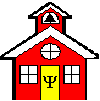Education and Human Sciences, College of

Department of Educational Psychology: Faculty Publications
Document Type
Article
Date of this Version
2010
Abstract
The purpose of this study was to explore the relationship between gifted adolescents’ forms of overexcitabilities and selfconcepts. Clusters of adolescents were formed on the basis of their overexcitabilities, and these clusters of adolescents were then compared with regard to their self-concept scores. Gender differences were also examined. The sample consisted of 379 gifted adolescents, ranging in age from 11 to 16 years of age. Forms of overexcitabilities were measured using the Overexcitabilities Questionnaire–II, and various facets of self-concept were measured using the Self-Description Questionnaire–II. Using cluster analysis, multivariate analysis of variance, and chi-square analysis, results suggested a distinct four-cluster solution, as well as differences between clusters in self-concept and gender.
Within this research, four distinct clusters of adolescents were found, namely a Low Imaginational group, a High Intellectual group, a Low Imaginational/High Psychomotor group, and a Low Psychomotor group. Differences in self-concept were found to center on the Low Psychomotor group, such that this group scored significantly lower than the three other groups with regard to various facets of self-concept. Females significantly outnumbered males in the Low Psychomotor group. Thus, gifted adolescent females with a low psychomotor overexcitability score may be more prone to a lowered self-concept and may need intervention, counseling, or special activities/accommodations to buffer the potential self-concept deficits they may face.


Comments
Published in Gifted Child Quarterly 54:1 (2010), pp. 3–17; doi: 10.1177/0016986209352682 Copyright © 2010 National Association for Gifted Children; published by Sage Publications, http://gcq.sagepub.com Used by permission.